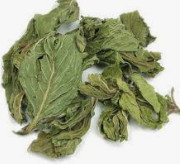Effect and evaluation of different drying methods on multi-functional components in mint
[Abstract] GC-MS and UPLC-TQ-MS techniques were used to analyze and evaluate the chemical composition and content changes of two monoterpenes, four phenolic acids and five flavonoids in Mentha peppermint by different drying methods, and the effects of drying methods on their chemical composition were investigated. TOPSIS comprehensive analysis method was used to evaluate the chemical composition of Mentha peppermint, which provided a basis for the determination of appropriate drying methods.

The results showed that microwave drying equipment had the greatest influence on the content of menthol, caffeic acid and rosmarinic acid, followed by chlorogenic acid and geranin-7-O-glucoside. At the same temperature, the retention of active ingredients by hot air drying was better than that by microwave drying and infrared drying. The retention of total active ingredients by low temperature drying (40-45 C) was significantly higher than that by high temperature drying (60-70 C). The total amount of phenolic acids in the treated samples was significantly higher than that in the untreated samples, showing a certain degree of enzymatic activity.
Key words: Mint microwave drying; drying method; GC-MS; UPLC-TQ-MS; TOPSIS comprehensive evaluation

Labiatae plant Mint is used as medicine to dry the above ground parts. It has pungent taste and cool nature. It belongs to the lung and liver meridians. It has the functions of relaxing wind and heat, clearing head, relieving throat and rash, and soothing liver and qi. Modern studies have shown that menthol plants are rich in volatile oils mainly composed of monoterpenoids, flavonoids, phenolic acids and other chemical components, which have significant biological activities and play a major material basis for its traditional efficacy.
The traditional processing method of peppermint medicinal materials origin is to select sunny days when the stems and leaves are flourishing in summer and autumn or when the flowers are blooming to three rounds, and then to harvest them separately and dry them in shade or sun. Traditional drying methods have some disadvantages, such as long drying period, vulnerability to weather conditions and uneven quality of medicinal materials after drying. In recent years, drying methods based on modern drying principles and technologies have been gradually applied to the drying process of Chinese medicinal materials in their producing areas, showing the advantages of short drying time, controllable drying conditions and stable product quality.
At present, the commonly used modern drying technologies of Chinese medicinal materials mainly include microwave drying, infrared drying, hot air drying and so on. Microwave drying has strong penetrating power, fast dehydration, and can also play the role of insecticidal eggs and inactivation of enzymes. It is often used to kill flowers, stems and leaves which are prone to browning or mildew, and herbs before drying.
Infrared drying is carried out at the same time with internal and external heating, which has higher dehydration efficiency than hot air drying, and is suitable for drying and processing of large water content, mildew-prone, and precious Chinese medicinal materials. Hot air drying uses flowing hot air to heat medicinal materials and take away moisture. Its advantages are low cost of drying equipment, high drying efficiency, free from weather conditions, temperature controllable, and suitable for drying and processing of most Chinese medicinal materials.
Taking the drying process of menthol medicinal materials as an example, this study compared the effects of traditional drying, shade drying and modern drying methods on the formation of effective quality of menthol medicinal materials, and explored the effects of various factors on the chemical composition of monoterpenes, phenolic acids and flavonoids in the drying process, so as to form a common drying process technology for producing medicinal materials rich in volatile oils. Provide useful exploration and reference.